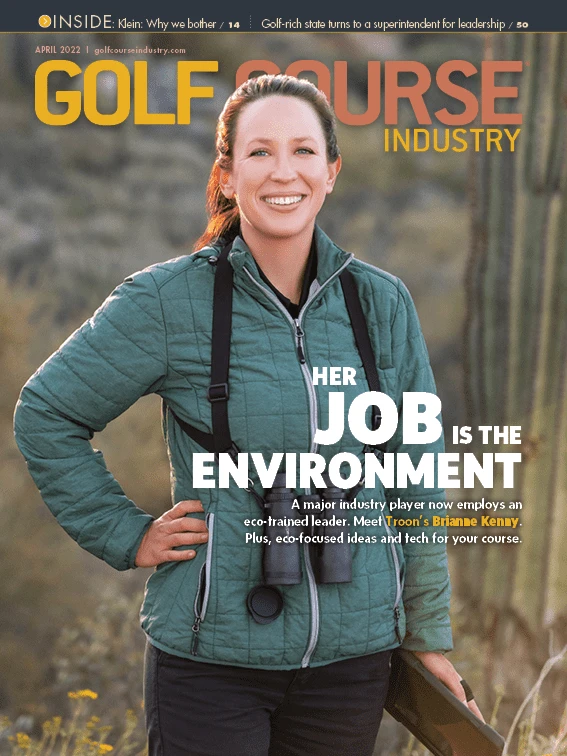
First golf of the season up north. Some courses here in Connecticut have yet to open — mainly the inland private ones. But my local municipal facility, Wintonbury Hills Golf Course in Bloomfield, north of Hartford, has just opened its doors. Cart-path only, I’ve been told, but that’s never a matter for me, as I always walk my neighborhood facility. That’s one of many reasons why I play.
I had gotten up early to face a mountain of paperwork. It’s tax season, which means a lot of travel receipts to sort. And there’s this long, detailed form to fill out on behalf of my mother’s transfer from assisted living to a nursing home. Called the paving contractor to get an estimate on redoing the driveway. Found a landscaper who could Brush Hog the backyard and clear out an acre of understory. Called the arborist to have him take a look at a weeping cherry tree in serious decline. And managed to plow through enough emails to make it feel like I was engaged with the outside world.
At 10:30 a.m. I looked up and realized the day had warmed up enough for an emergency nine. And so off I went, in time to join a twosome at 11:20 for my first of the year
The greens were bumpy. Divots from last fall had not yet filled in. And the ground was so wet from rain three of the past five days that my low draw got no roll and I found myself unable to reach par 4s in two. The golf bag felt a little heavier than normal, and the hills I climbed felt as if they were steeper than usual.
At the third hole, 148 yards to a back pin, I hit one of those high, arcing 7-irons that make it all worthwhile. It reminded me again, as if I needed any prodding, why I play this game and why so many people work so hard to provide it.
Across the country and around the world, folks work very hard to sustain this game of golf. Whenever I am at a trade show, like the March meeting of the New England Regional Turfgrass Foundation in Providence, Rhode Island, I come away amazed at the expertise that trained professionals devote to their craft. Here are people who devote their entire careers to the study of insects, turf pathology, water quality, safety, pesticides and environmental management. And this is only the golf course side of things.
Yet it is still only a game, a chance for some exercise, a few precious hours outdoors without the recurring buzz of incoming messages and memos.
Most of all, I find golf worthwhile simply as a test of myself — my body, my limitations, my potential and my aspirations. I’m a career mid-handicapper, never among the ranks of the single digits. I fight certain things under the general rubric of aging. And yet I keep trying, working on my game, looking for ways to stretch some muscles and build up some more tension and flex that I can maintain distance for another year or two and compensate elsewhere.
I have my own version of the coveted “muscle memory” that swing instructors harp upon. It’s the kind of embedded sensibility that is less mental than visceral, and it dates back to the moment as a 12-year-old when I first stepped onto a golf course and completely fell in love with the game.
It took place at Inwood Country Club on Long Island, which I had passed by in our family car en route to Far Rockaway Beach. One day I got on my bicycle and peddled over to the club, parked up by the stone entrance gate and walked out on the ground. I walked over a stone bridge, down one side of a fairway, and stood there idly as someone in the distance swung a club from a tee. I still remember the glint of the sun on the shaft and the image of the ball as it chalked a path skyward. As the ball butterflied down, I can still feel the way my body just quivered and how a feeling overcame me of complete and total fascination. It was love at first flight.
When I hit a dead end while writing about golf, I can instantly recall that feeling, of first love, and then it’s as if the whole keyboard becomes unglued. A similar feel, of being both transfixed and liberated, reverberates through me on those precious few occasions when I reproduce that ball flight — such as with that 7-iron the other day.
That’s also why so many superintendents and golf pros devote their careers and their lives to a simple game. Because there is nothing simple about the emotional engagement and physical transformation that, at times, express themselves out on a golf course during a round, or even on a simple walk of the grounds.

Explore the April 2022 Issue
Check out more from this issue and find your next story to read.
Latest from Golf Course Industry
- Editor’s notebook: Green Start Academy 2024
- USGA focuses on inclusion, sustainability in 2024
- Greens with Envy 65: Carolina on our mind
- Five Iron Golf expands into Minnesota
- Global sports group 54 invests in Turfgrass
- Hawaii's Mauna Kea Golf Course announces reopening
- Georgia GCSA honors superintendent of the year
- Reel Turf Techs: Alex Tessman





